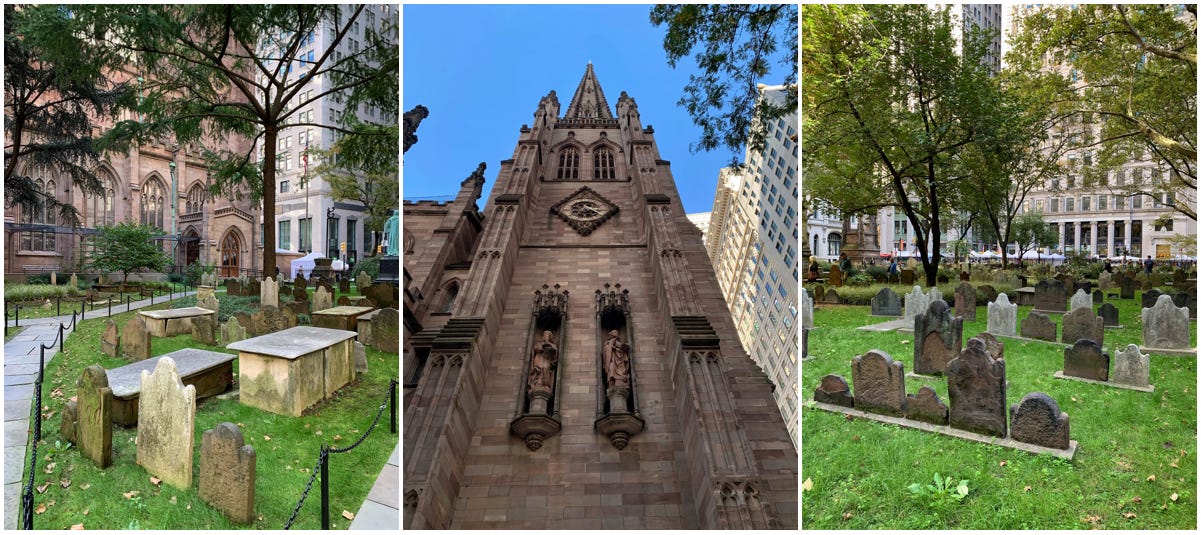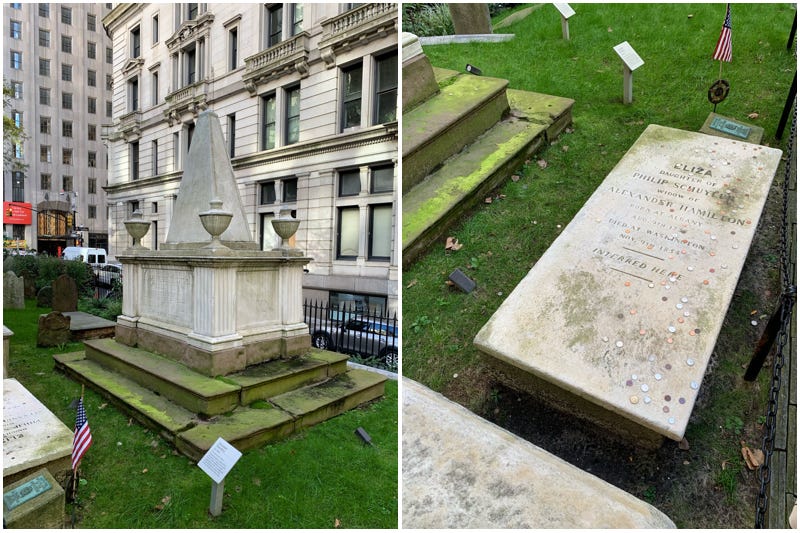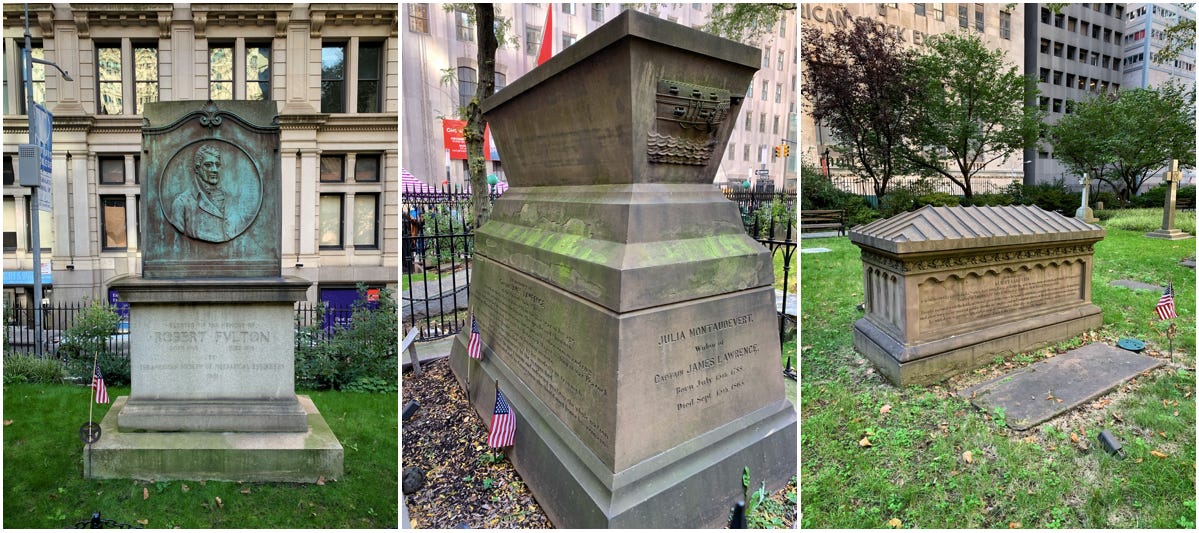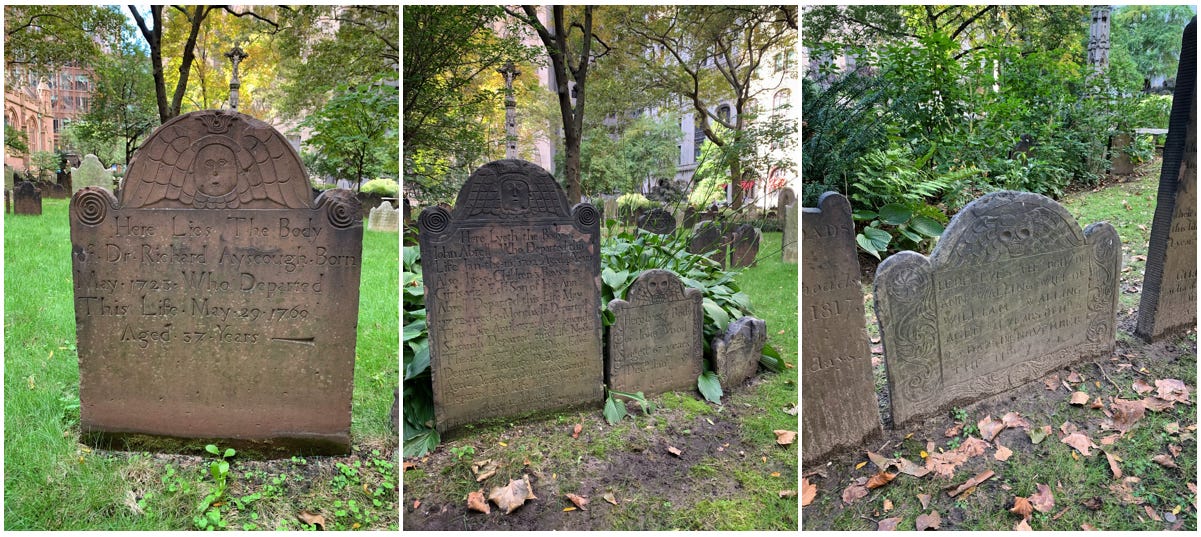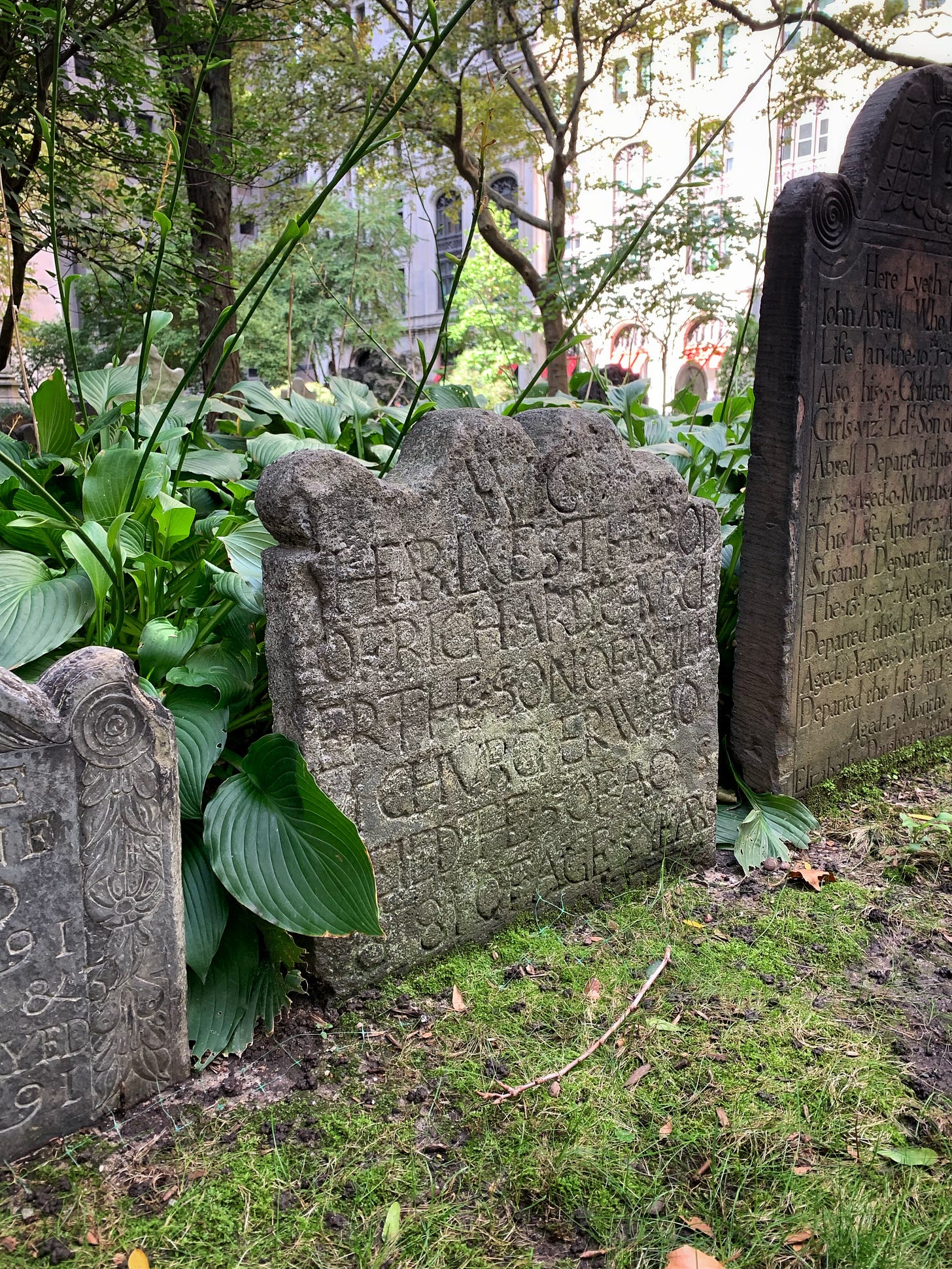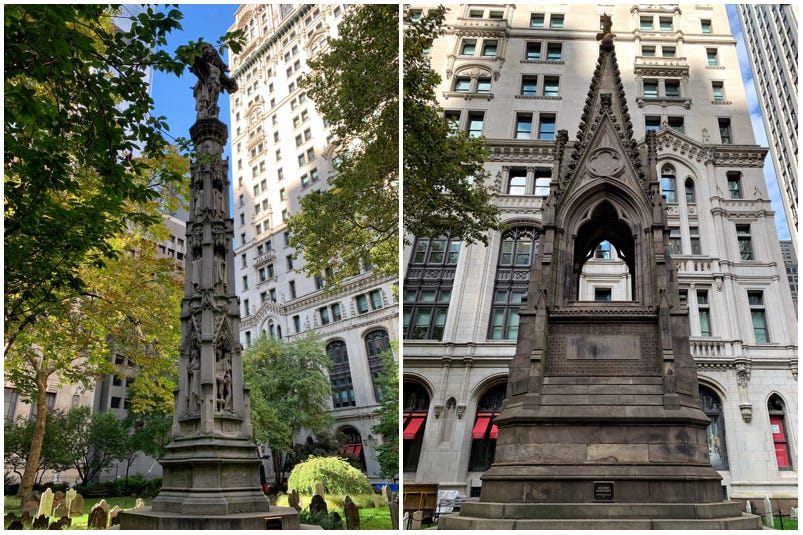Sunday Pastries With the Dead 5
A very special NYC edition at Trinity Church, established in 1696.
There’s a street fair on Broadway that stretches across the front of the grand Trinity Church and its surrounding burial ground; people walk lazily past its main entrance’s massive carved bronze doors unimpeded by traffic, perusing vendors with wares set up beneath white tents. There’s a crystal-laden table to my left and a scarf-filled stand to my right as I pass through the church’s wrought iron gate, the scents of charred meat, popcorn, and a cloying note of cotton candy wafting in with me.
As I enter the building’s north-side cemetery, I nod at the black-clad guards stationed at each corner of the yard; the paths are lined with chain links, indicating that one cannot walk among the historical gravestones. But that doesn’t stop me from leaning over to inspect them as I wander.
There have been three major iterations of the gorgeous church that separates the north and south-side graveyards: the first was constructed in 1698; it was destroyed in the Revolutionary War’s Great New York City Fire of 1776. The second structure, built in 1788, was made much larger to accommodate the rapidly-growing population of the city; it was torn down in 1839 after that winter’s storms severely weakened its structural integrity. The current Gothic Revival church was built from 1839 to 1846—thanks to its massive spire, it was the tallest building in the U.S. until 1869.
The most well-known resident buried here is American Founding Father and doomed duelist Alexander Hamilton. Hamilton’s urn-ornamented sarcophagus monument is in the south side cemetery, and his wife Eliza resides beside him. Visitors dropped coins on her ledger stone marker while grumbling about Hamilton cheating on her; I’m one of the few who hasn’t seen the musical (I have an extreme aversion to plays where people randomly break out in song) and I know very little about the history behind their relationship, but I felt a sting for her all the same.
Other notable people interred here include Robert Fulton, developer of the steamboat, Captain James Lawrence, naval hero and inspiration for one seriously impressive sarcophagus pedestal tomb, and Albert Gallatin, fourth Secretary of the Treasury and a founder of New York University.
Of course, the stones that drew me to them didn’t belong to the (in?)famous dead—the churchyard is filled with incredible, wildly varied examples of the Death’s Head symbol (which you all know, by now, is my personal favorite).
The oldest headstone in the yard is dated 1681 and belongs to five-year-old Richard Churcher.
There are also two particularly imposing monuments—the Astor Cross, finished in 1914 and dedicated to the Caroline Webster Schermerhorn Astor (NYC socialite extraordinaire and gatekeeper of the Four Hundred), and the circa 1852 Soldiers’ Monument, which honors Revolutionary War soldiers held in captivity in NYC who are thought to be buried in the cemetery.
This greenery-filled oasis of antiquity nestled among towering modern skyscrapers starkly underscores how cemeteries ground us simply by existing. Whether you’re weaving through crowds while running an errand in the city or driving down a back road in the country, the silhouettes of headstones can rise before you unbidden, reflecting your own mortality back as if in a mirror. The past is our best window to the present, entreating us to live in the here and now, and do it well.






